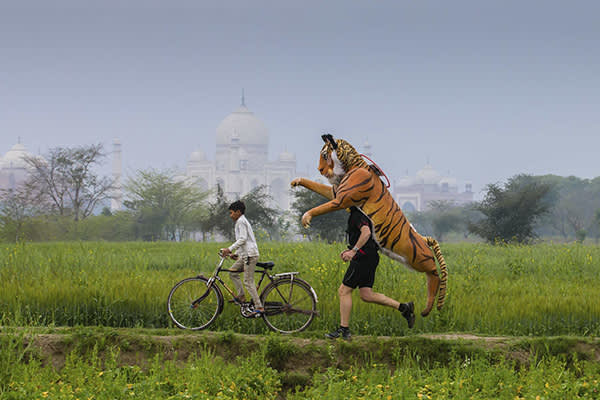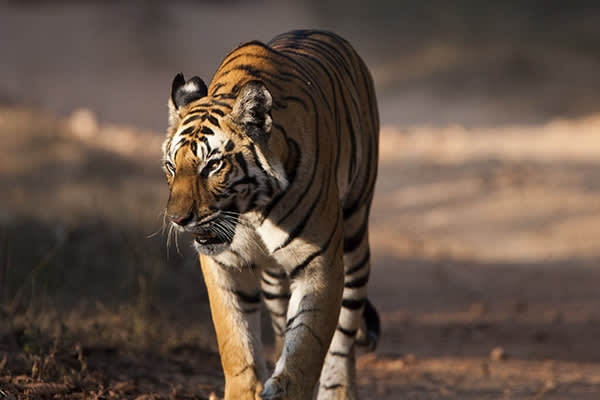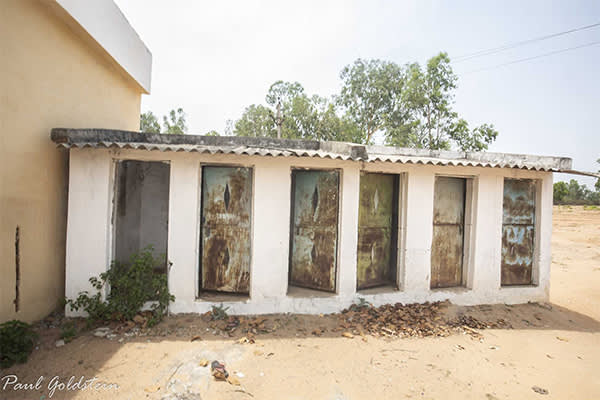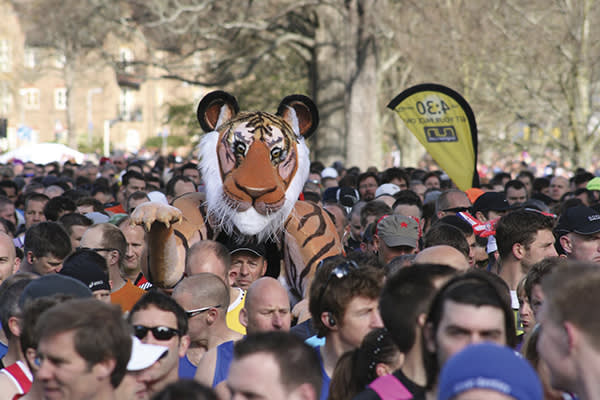After nearly a century of decline, the wild tiger population figure is limping upwards thanks to conservation efforts from, philanthropists, local communities, charities and NGO’s across the globe to ensure their survival. However, with only 2,500 Bengal tigers left in the wild, the world’s largest feline is still endangered, leaving much more work to be done if this remarkable species survives for future generations.

At Exodus, we’re passionate wildlife enthusiasts and are determined to keep the momentum going in the fight for the protection and conservation of Bengal tigers. Continuing on from the successes of past campaigns since 2010, we are launching the “Worth More Alive X” Campaign with award-winning wildlife photographer, guide, presenter and avid conservation campaigner – Paul Goldstein.
Truly earning his stipes over the last decade, Paul Goldstein’s incredible journey with his ten-foot tall Bengal tiger suit began when he ran the London Marathon for the first time back in 2010. Since, he’s completed fifteen marathons, including running 4 marathons back to back in one week in 2011 and climbing Mount Kilimanjaro in 2012. But he’s not finished yet. Returning to his rigorous training once more, Paul’s back for his most challenging runs yet – completing the 2020 London Marathon shortly before tackling what is arguably the world’s most gruelling and highest marathon, from Everest Basecamp to Namche Bazaar in Nepal. This is only completed after ten days on the Basecamp trail.
But before he ties his running shoes, we’ve had the opportunity to interview this keen and outspoken conservationist to find out more about the man behind the tiger suit, and his unrelenting fight for these beloved predators.

1. Why have you decided to bring your tiger suit out of retirement?
“Despite tiger numbers increasing a little in India, they are still enormously threatened and are nowhere near numbers approaching stability”, Paul comments. Apart from habitat loss, the most immediate danger that Bengal tigers face daily is poaching, which fuels the despicable trade in ‘traditional’ medicine, where they’re traded illegally, fuelling a multi-billion-dollar criminal network. “Three sub-species alone have been wiped out in the last ten years, and an awful lot more needs to be done before this animal is declared safe.”
Signifying the 10-year anniversary since Paul ran his first London Marathon, he believes it is a more important time than ever to continue his pursuit for the conservation of Bengal tigers. “Our “Worth More Alive X” Campaign supported by the Exodus Adventure Travels Foundation, is about raising much needed funding for local educational projects in India but we’re also trying to raise publicity and awareness to the disgraceful plight of these valuable creatures. I would like my children to grow old with a world still containing wild tigers and indeed rhinos, I am currently doubtful about that actually happening”.
2. What has encouraged you to campaign for the protection and conservation of Bengal tigers?
Paul explains, “I often get asked ‘what is your favourite animal?’ … I don’t have an answer. Love affairs with particular animals, in my opinion, should be reserved for D-list celebrities crying crocodile tears about whatever fashionable species their vanity chooses – pragmatism is what will save these animals. However, I will never forget my first sighting of the Bengal tiger in the wild; it left an indelible imprint on me”, he continues, “every time I read of these and other animals lost to poaching and the despicable yet lucrative trade of traditional medicine, it girds my anger. These animals have received plenty of funding, most of it poorly spent. They suffer from bureaucratically run parks underwritten by red tape, corruption, greed and of course encroachment, but people need to understand that tigers are worth so much more … alive.” When asked why he continues to fight and run for the cause, Paul was quick to comment, “because I am fuelled by rage and injustice”.

3.What will the money raised from the “Worth More Alive X” campaign go towards?
“There are two schools adjoining Bandhavgarh park”, Paul mentions, “they educate over 1000 people in the community, and frankly their facilities are in total disrepair.” With no electricity and basic amenities, the funds raised for the campaign will go directly into substantial renovation, including building solar panels, a library, water pumps, vegetable gardens and more. “The teachers have no incentive nor do the pupils, which is why I want their schools to be completely rebuilt on a sustainable basis with The Mahua & Sal Project.”
“This will take a lot of money”, he says, “but when the number of pupils and teachers see what has been done, they will understand just how important their striped neighbours are. It is here where the essence of the whole campaign lies, and what we’ve been building towards over the last ten years.”

4. What’s next for you and your 10-foot tiger suit?
“I think the London marathon, Everest Base Camp and the Everest marathon is a decent sign-off for someone my age”, Paul jokingly adds.
5. What are your hopes for the future of the currently endangered Bengal tigers?
“Good question. I would like their numbers to be stabilised and spread across all parks in India, and I would like the Chinese and any other country that consumes them to stop -now”, he continues, “it is wrong, it is unethical, and it has zero medical provenance, just like the rhino horn. The first magnificent male tiger I saw in 1998 was poached several months later, parcelled up piecemeal and sold in China. The profit was probably around $35,000. A live tiger when all ancillary benefits are considered can be worth around $80.million. The end users in the Far East need to be shamed, publicly and frequently, by everyone. Tigers matter, so many companies, sports teams, breakfast cereals and indeed golfers are happy to use their name, few, if any are doing anything to arrest their demise. To the local communities, alive, they are priceless.
6. When will you stop campaigning?
“When the Bengal tigers are removed off the endangered species list for good. But sadly, the suit will retire once I finish the Everest Marathon – there may be some tears.”

To find out more about our Worth More Alive X campaign for 2020 and how you can support our fundraising efforts for the protection and conservation of Bengal tigers, click here.






